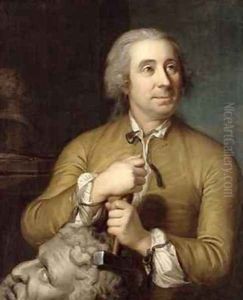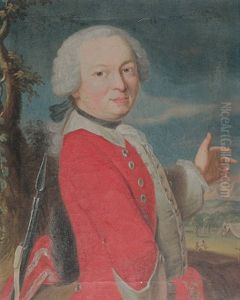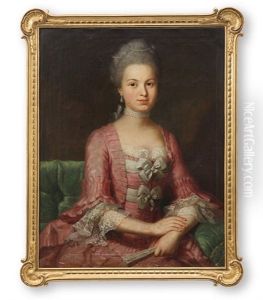Emanuel Handmann Paintings
Emanuel Handmann was a Swiss painter known for his portraits. Born on August 16, 1718, in Basel, Switzerland, Handmann became an influential artist in the mid-18th century. He initially trained under his father, who was also a painter, and later he continued his education in the arts in various European cities, including Paris and London, which were vibrant centers for artistic development at the time.
Handmann's work was greatly influenced by his travels and his exposure to different artistic styles and techniques. After his time abroad, he returned to Switzerland where he established himself as a prominent portrait painter. He captured the likenesses of many significant figures of his time, including members of the Swiss bourgeoisie, academics, and politicians. His portraits were appreciated for their detailed representation and psychological depth, often reflecting the social status and character of his sitters.
In 1753, Handmann received a significant commission to paint the portrait of Albrecht von Haller, a renowned Swiss anatomist and poet, which increased his fame. Handmann's style was characterized by a skillful use of light and shadow, a nuanced palette, and a refined attention to the textures of fabrics and materials, which brought his subjects to life on the canvas.
Despite the prominence he achieved in his lifetime, Emanuel Handmann's work fell into relative obscurity after his death on November 3, 1781. However, his portraits remain as historical documents and are part of the collection of various Swiss museums, where they continue to be studied by art historians and appreciated by the public. They provide insight into the cultural and societal dynamics of 18th-century Switzerland and serve as a testament to the skill and craftsmanship of the artist.






